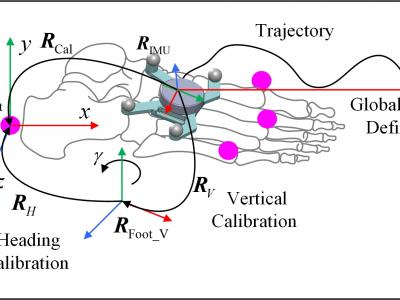Signal Processing

This is a dataset: a database of radar cross sections of models; The characteristics of the data set include radar frequency, polarization mode (currently only the co-polarized VV and HH), radar Angle of sight (pitch and azimuth), and target characteristics RCS. According to these input feature information, the highly nonlinear feature rcs of the predicted target is estimated. Prediction is actually an interpolation method, which can be divided into two kinds, interpolation and extrapolation. We can try different methods according to the data set provided, please show your skills!
- Categories:
 8 Views
8 Views
Two publicly available datasets, the PASS and EmpaticaE4Stress databases, were utilised in this study. They were chosen because they both used the same Empatica E4 device, which allowed the acquisition of a variety of signals, including PPG and EDA. The dataset consists of in 1587 30-second PPG segments. Each segment has been filtered and normalized using a 0.9–5 Hz band-pass and min-max normalization scheme.
- Categories:
 37 Views
37 ViewsHyperspectral imaging (HSI) has become a pivotal tool for environmental monitoring, particularly in identifying and analyzing hydrocarbon spills. This study presents an Internet of Things (IoT)-based framework for the collection, management, and analysis of hyperspectral data, employing a controlled experimental setup to simulate hydrocarbon contamination. Using a state-of-the-art hyperspectral camera, a dataset of 116 images was generated, encompassing temporal and spectral variations of gasoline, thinner, and motor oil spills.
- Categories:
 149 Views
149 ViewsKnee osteoarthritis (KOA) is a common joint disease, causing pain, stiffness and other motor disorders. Gait analysis is an important basis for understanding the causes and formulating personalized rehabilitation plans. Although optical motion capture is regarded as the gold standard for measurement, it has drawbacks such as high cost and being limited to laboratories.
- Categories:
 85 Views
85 ViewsThis dataset comprises extensive multi-modal data related to the experimental study of ultrasonically excited pulsating fluid jets used for bone cement removal. Conducted at the Institute of Geonics, Ostrava, Czech Republic, the study explores the effect of varying standoff distances on erosion profiles, under controlled parameters including a fixed nozzle diameter, sonotrode frequency, supply pressure, and robot arm velocity. The dataset includes numerical data representing ablation profiles, captured as a large CSV file, and audio recordings captured using a high-resolution microphone.
- Categories:
 146 Views
146 Views
With the accelerating pace of population aging, the urgency and necessity for elderly individuals to control smart home systems have become increasingly evident. Smart homes not only enhance the independence of older adults, enabling them to complete daily activities more conveniently, but also ensure safety through health monitoring and emergency alert systems, thereby reducing the caregiving burden on families and society.
- Categories:
 108 Views
108 Views
A novel ultra-low-voltage (ULV) Dual-EdgeTriggered (DET) flip-flop based on the True-Single-PhaseClocking (TSPC) scheme is presented in this paper. Unlike Single-Edge-Triggering (SET), Dual-Edge-Triggering has the advantage of operating at the half-clock rate of the SET clock. We exploit the TSPC principle to achieve the best energy-efficient figures by reducing the overall clock load (only to 8 transistors) and register power while providing fully static, contention-free functionality to satisfy ULV operation.
- Categories:
 21 Views
21 ViewsJamming devices present a significant threat by disrupting signals from the global navigation satellite system (GNSS), compromising the robustness of accurate positioning. The detection of anomalies within frequency snapshots is crucial to counteract these interferences effectively. A critical preliminary measure involves the reliable classification of interferences and characterization and localization of jamming devices.
- Categories:
 172 Views
172 ViewsJamming devices pose a significant threat by disrupting signals from the global navigation satellite system (GNSS), compromising the robustness of accurate positioning. Detecting anomalies in frequency snapshots is crucial to counteract these interferences effectively. The ability to adapt to diverse, unseen interference characteristics is essential for ensuring the reliability of GNSS in real-world applications. We recorded a dataset with our own sensor station at a German highway with two interference classes and one non-interference class.
- Categories:
 241 Views
241 Views


